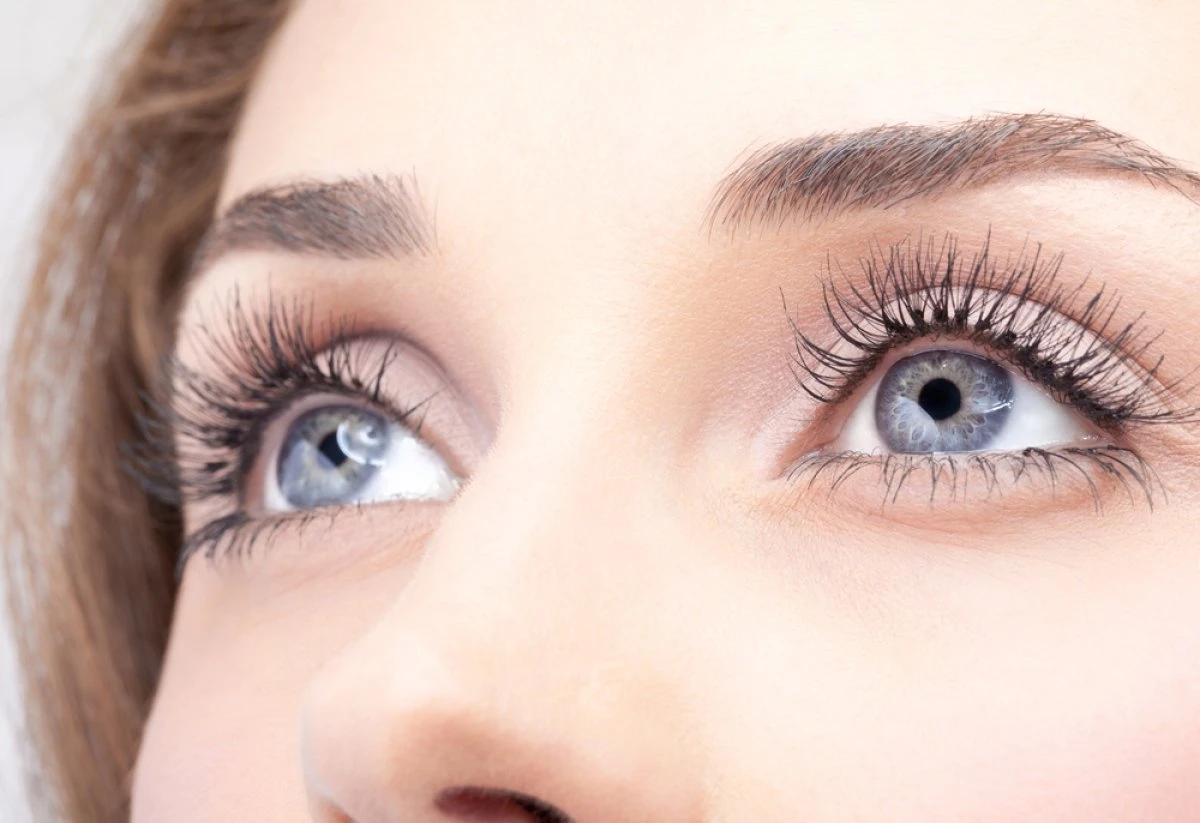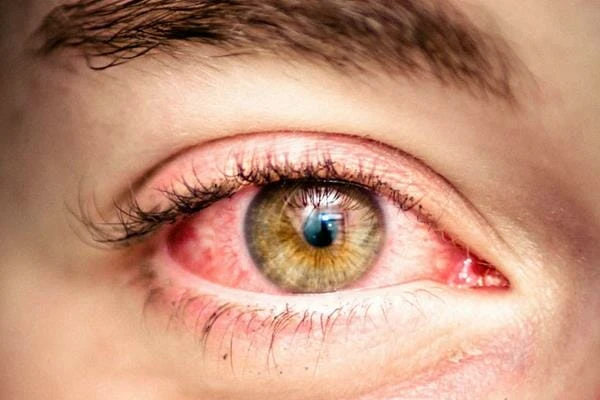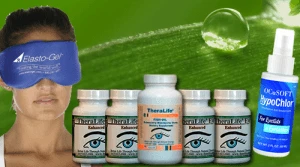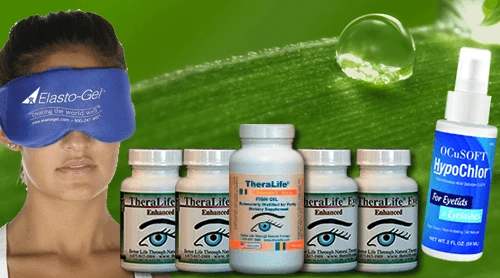Control Your Ocular Rosacea With TheraLife
Reduce ocular inflammation, treat your dry eyes to gain control. Ocular rosacea is an autoimmune disorder.
Definition
Rosacea is a common skin condition that affects millions of people globally. It presents with facial redness, bumps, and pimples on the face, nose, or cheeks.
The exact cause of ocular rosacea, like skin rosacea, is unknown. It may be due to one or more factors, including Heredity.
Ocular rosacea is a rarer form of this disorder which can have significant implications for ocular health if left untreated. This article will discuss the signs and symptoms associated with ocular rosacea and how to seek effective treatment.
Patients and medical professionals often under-recognized rosacea’s ocular symptoms because they may be subtle. Common indications include dry eyes, burning sensation or itching around the eyes, blurred vision or sensitivity to light, swollen eyelids, and conjunctivitis (pink eye).
It would help if you did not ignore these symptoms as they can lead to more severe complications such as corneal scarring, blepharitis (inflammation of the eyelid margins), and even uveitis (inflammation at the back of the eye).
What Is Ocular Rosacea?
Ocular rosacea is like a raging storm, wreaking havoc on your eyes and eyelids. It’s an inflammatory skin condition that affects the eye area, resulting in redness, dryness, irritation, and burning sensations. Commonly referred to as ocular rosacea or oculoplastic rosacea, this medical condition can cause severe damage if left untreated.
The most common symptom of ocular rosacea is persistent eye redness. The redness occurs when tiny blood vessels near the eye’s surface swell due to inflammation, leading to visible signs of reddening around the whites of the eyes.
In addition to redness, many people with ocular rosacea also experience dry eyes and itching or burning sensation in their eyes. These symptoms may worsen when exposed to windy weather or air-conditioned environments.
It’s essential for those who are experiencing any of these symptoms to seek professional advice from a doctor immediately. If not treated correctly, ocular rosacea can lead to more severe complications such as infections and vision loss. It’s essential to have regular check-ups with an experienced healthcare provider specializing in treating this condition to ensure proper treatment and minimize risks.
Moving forward, we will look at other common symptoms associated with ocular rosacea.
Common Symptoms
Ocular rosacea is a condition that affects the eyes and can cause significant discomfort, which has various symptoms, including tear production changes, redness of the eyelids, watery or bloodshot eyes, dry-eye sensation, stinging or burning sensations in the eyes, itching around the eyes, and blurred vision. Additionally, ocular rosacea sufferers may experience an increased sensitivity to light and recurrent episodes of conjunctivitis (pink eye).
Tear production changes are among the most common symptoms associated with ocular rosacea. This symptom can vary from having excessive tearing to not being able to produce tears at all. In addition to this change in tear production, individuals suffering from this condition often report feeling uncomfortable eye irritation or pain.
They might also feel a gritty sensation in their eyes or have chronic redness due to inflammation of the conjunctiva (the thin membrane covering the outside of your eyeballs).
If left untreated for long periods, ocular rosacea can permanently damage your corneas and other more severe issues such as glaucoma or cataracts. Therefore it is crucial to be aware of any signs that could point towards this condition so early diagnosis and treatment if needed.
Several autoimmune diseases cause ocular rosacea. There is no definitive proof that rosacea is an autoimmune disease or caused by one. As previously mentioned, people are still determining the causes behind this condition.
In diagnosing ocular rosacea, doctors perform several tests which will help determine whether someone has this condition.
Diagnosis
Ocular rosacea is a chronic, inflammatory condition that affects the eyes and eyelids. Commonly known as “pink eye,” it can cause redness, bloodshot eyes, swelling of the eyelids, dry eyes, styes (hordeolum), light sensitivity, and blurry vision.
Diagnosing ocular rosacea requires an experienced medical professional to recognize its signs and symptoms. To get to the bottom of things, like peeling back an onion layer by layer, your doctor will conduct a thorough physical exam and review any relevant medical history.
Risk factors associated with developing ocular rosacea include age (over 30) and gender (more common in women). A family history of rosacea may also increase one’s chances of having this condition.
While there is no surefire way to prevent ocular rosacea from occurring or worsening – lifestyle changes may help reduce flare-ups. Avoiding triggers such as UV exposure, extreme temperatures, and stress should be considered when managing the condition. Also, maintaining good hygiene practices, such as regularly washing hands, is beneficial for individuals living with ocular rosacea.
Considering treatment options early on can help manage flares before they become more severe and debilitating. In many cases, permanent damage could occur if left untreated, leading to poor vision quality. If you suspect you have ocular rosacea speak with your healthcare provider about treatments available for symptom relief to ensure long-term success in keeping these unpleasant symptoms at bay.
Treatment Options
Rosacea ocular, or ocular rosacea, is a condition that affects the eyes and eyelids of some individuals with facial rosacea. Symptoms may include dryness, redness, irritation, stinging sensations, foreign body sensation in the eye (like sand), swollen eyelids, and discharge from one or both eyes.
Those with facial rosacea must treat it appropriately to reduce inflammation and treat dry eyes to get ocular rosacea under control.
Treat Dry Eyes
The dry eye is at the center of ocular rosacea and facial rosacea. Treating dry eyes to manage ocular rosacea makes sense. The goal is to reduce inflammation from dry eyes to control ocular rosacea, which has inflammation as the root cause.
Treating dry eyes from within effectively controls both rosacea and ocular rosacea. The oral formula can normalize tear function to relieve dry eyes and reduce inflammation. The formula consists of all-natural ingredients composed of natural herbs, vitamins, and minerals optimized for dry eye treatment.
Other treatments
Other treatments for ocular rosacea should suit each individual’s needs. Still, they can generally involve dietary changes, lifestyle modifications, and topical treatments such as eye drops and ointments.
The following are common dietary changes recommended for treating ocular rosacea:
1. Limit alcohol consumption
2. Avoid spicy foods
3. Reduce caffeine intake
4. Eat smaller meals throughout the day instead of large ones
In addition to diet modification, lifestyle modifications may help manage symptoms associated with this condition. These could include avoiding environmental triggers like windy days, humidity, and hot temperatures; wearing protective sunglasses when outdoors; using artificial tears to lubricate the eyes; taking breaks from looking at digital devices; and not rubbing your eyes excessively or without washing your hands first.
Treating ocular rosacea takes time and patience, but it is possible to find relief if you make necessary adjustments to your lifestyle and diet while working closely with an experienced healthcare provider who understands your unique goals and challenges. With appropriate treatment, many people can return to their normal activities without experiencing any disruption due to their condition.
By employing these strategies now, individuals living with ocular rosacea can look forward to improved vision quality going forward.
Moving ahead, attention must also turn towards other forms of treatment, such as eye drops and ointments which will further aid in managing symptoms related to this condition.
Eye Drops And Ointments
We can treat ocular rosacea symptoms with topical medications like eye drops and ointments.
We use artificial tears to lubricate the eyes, reduce irritation, and protect against further damage. These do not contain active ingredients; you can purchase them over the counter at pharmacies.
In addition, warm compresses may relieve dryness and itching associated with rosacea ocular symptoms. Applying them for five minutes several times daily helps to soothe the affected area by increasing circulation.
Other forms of treatment include corticosteroid or antibiotic eye drops, prescribed for an infection present in the eye. Corticosteroids decrease inflammation, while antibiotics treat bacterial infections that could cause secondary complications like conjunctivitis.
Topical immunomodulators can decrease inflammation caused by immune system responses triggered by rosacea ocular symptoms.
When treating ocular rosacea, it is crucial to take caution when using these treatments due to potential side effects like redness or burning sensation near the eyes.
It is best to speak with your doctor before trying new medication or therapy because they can assess which option is most suitable based on individual needs and circumstances.
As we advance, oral medication is a comprehensive approach to effectively managing this condition.
Oral Medication
1. Ocular rosacea is a chronic inflammatory skin condition that can affect the eyes and eyelids, sometimes leading to vision loss if left untreated.
2. Oral medications are a standard treatment for ocular rosacea and can include antibiotics, isotretinoin, and anti-inflammatory drugs.
3. The main benefit of using oral medications for ocular rosacea is that they can effectively reduce inflammation and decrease the severity of symptoms.
4. Long-term use of oral medications can also help prevent the condition from recurring.
5. Side effects of oral medications for ocular rosacea may include dry eyes, blurred vision, and increased sensitivity to light.
6. It is essential to discuss the potential risks and benefits of oral medication with a healthcare provider before starting treatment.
Types Of Medication
Ocular rosacea is a chronic skin condition that affects the eyes, and it can cause signs of inflammation such as redness, swelling, itching, burning sensation, dryness, and sensitivity to light. When left untreated, ocular rosacea can lead to severe complications, including corneal damage.
To help reduce symptoms of ocular rosacea, an array of medications are available for treatment, including topical creams and oral antibiotics. Topical medicines like steroid creams can quickly alleviate discomfort in mild cases of ocular rosacea; however, they should generally not be used long-term due to potential side effects such as thinning of the skin or increased risk of infection. Other treatments, such as Botox injections, have been found to decrease facial wrinkles associated with this condition.
Oral medication is often prescribed for moderate to severe cases of ocular rosacea to reduce inflammation within the eye area and improve overall vision quality. Antibiotics such as doxycycline and minocycline work well; however, their effects can vary from patient to patient, so careful monitoring by a doctor is necessary if taking these drugs regularly. In addition, some patients may require additional therapies depending on their case.
With proper medical care and effective treatment options, people suffering from ocular rosacea can achieve relief from its uncomfortable symptoms and minimize potential complications caused by the condition.
Benefits Of Treatment
Treating ocular rosacea can provide beneficial effects such as improved vision quality, reduced inflammation, and decreased discomfort.
Oral medication can treat moderate to severe cases to reduce the symptoms of this condition.
In addition, managing potential triggers and making lifestyle changes may be necessary for optimal treatment outcomes.
I am eating a healthy diet low in refined sugars and saturated fats, avoiding caffeine and alcohol consumption, reducing stress levels, and wearing protective clothing outdoors. These strategies may aid in managing flare-ups of ocular rosacea.
Although there is no cure for this chronic skin disorder, employing these practices and effective medical management can help patients relieve their uncomfortable symptoms.
Side Effects of Medications
Oral medication can treat ocular rosacea. However, it is essential to note that these medications can also lead to side effects.
Common side effects of oral medication for treating this condition include dry eyes and blurred vision.
These symptoms are usually temporary, but if they become severe or persist over a long time, patients should seek medical attention from their doctor.
Additionally, some medications used for treating ocular rosacea can increase sensitivity to sunlight, resulting in increased risk for sunburns.
Those taking such medications take precautions when spending extended periods outdoors by wearing sunscreen and protective clothing.
Laser Surgery
Living with ocular rosacea can be challenging, but effective treatments are available to help manage the condition and reduce its impact on daily life. Laser surgery is one of these options, offering patients a chance at relief from bothersome symptoms such as:
* Burning or stinging eyes
* A gritty sensation in the eyes
* Dryness of eyelids
This minimally invasive procedure uses short bursts of light energy to target affected areas around the eye, helping to reduce inflammation and diminish facial redness. It can also improve overall comfort and vision quality.
Patients considering laser treatment should discuss potential risks with their doctor before proceeding. We recommend sunscreen protection and lifestyle changes before surgery for optimal results. Additionally, it’s important to note that not all patients will experience lasting improvement after laser therapy; additional treatments or extra precautions may still be necessary for long-term symptom management.
To get the most out of this type of intervention, individuals must take proactive steps toward preventing and managing ocular rosacea through regular visits to an experienced eye care professional who can assess their current status and suggest further interventions if needed. This might include:
* Regular use of lubricating drops
* Application of topical medications or antibiotics
* Consumption of omega-3 fatty acids, which have anti-inflammatory properties
Making informed decisions regarding treatment plans while actively participating in preventive measures are critical components of living well with ocular rosacea.
Prevention And Management Of Ocular Rosacea
Ocular rosacea is a chronic inflammatory condition that affects the eyes and can lead to severe vision problems if left untreated. Fortunately, there are several steps people can take to prevent the development of ocular rosacea or reduce its severity once it has developed.
Reducing sun exposure, making dietary changes, and proper medical treatment all play an essential role in managing this condition. Sun exposure can worsen ocular rosacea symptoms such as dryness, redness, irritation, and swelling of the eyelids. To minimize these effects, individuals should avoid direct sunlight by wearing sunglasses with UV protection outdoors. Additionally, sunscreen on exposed areas of skin before going outside for extended periods.
Making dietary modifications may also help improve symptoms associated with ocular rosacea. Eating foods rich in antioxidants—such as green leafy vegetables and fruits—may reduce inflammation and provide additional health benefits. Furthermore, avoiding specific triggers like hot beverages and alcohol might help decrease flare-ups caused by this condition.
Finally, seeking professional medical care is paramount for treating rosacea effectively; topical medications can target specific issues related to eye involvement from this disorder. Given the potential risks of untreated, ocular rosacea, including decreased visual acuity and corneal damage, you should consider prevention and management strategies to maintain good eye health over time.
Frequently Asked Questions
How Long Does It Take For Ocular Rosacea Symptoms To Appear?
Like a thief in the night, ocular rosacea can come on suddenly and without warning. Symptoms of this condition may appear as quickly as one to two weeks after exposure to an irritant; however, some cases have seen symptom onset within days or even hours.
Regardless of how long it takes for symptoms to manifest, sufferers should seek treatment immediately once they become aware of any changes in their vision or eye health. Treatment options vary but typically include oral antibiotics, topical medications, and lifestyle modifications to reduce inflammation.
Knowing the signs of ocular rosacea is essential to start treatments.
Are There Any Natural Remedies For Ocular Rosacea?
Ocular rosacea is an inflammatory skin condition affecting the eyes and eyelids.
There are no known natural remedies for ocular rosacea, although dietary changes may help reduce flare-ups of symptoms such as redness, irritation, dryness, burning sensation, and swelling.
Treating ocular rosacea without consulting a healthcare professional could lead to other eye health risks or complications due to incorrect diagnosis or treatment.
Therefore, those affected by ocular rosacea should seek specialist advice on effective treatments.
Are There Any Home Remedies That Can Help Prevent Ocular Rosacea?
Taking proper eye care and sun protection steps is paramount for those looking to prevent ocular rosacea.
Applying sunscreen before any outdoor activities or wearing sunglasses can help protect the eyes from UV damage and reduce flare-ups of the condition.
Eating a balanced diet rich in antioxidants helps ward off symptoms. Maintaining good hygiene habits, such as cleaning makeup brushes regularly, will ensure that bacteria don’t build up on your eyelids.
Additionally, keeping stress levels at bay with regular exercise and meditation has been known to benefit overall health and reduce inflammation associated with ocular rosacea.
Are There Any Lifestyle Changes That Can Help Manage Ocular Rosacea?
Ocular rosacea is a disorder of the eyes that can cause discomfort, redness, and swelling.
To help manage this condition, specific lifestyle changes may be beneficial.
Diet modifications such as avoiding spicy foods or alcoholic beverages can reduce inflammation associated with ocular rosacea.
Stress management techniques like yoga, meditation, or deep breathing exercises can also reduce flare-ups of symptoms.
In addition to these measures, regular visits to an optometrist are essential to ensure that any disease progression is monitored and treated appropriately.
Is Ocular Rosacea Contagious?
Even though rosacea is a common skin condition, there remains much confusion about one of its variants: ocular.
Surprisingly enough, it can be pretty contagious despite being primarily an inflammation-based disorder.
While usually caused by external triggers and sun exposure, studies have found that both bacteria and viruses may play a role in exacerbating symptoms or even causing them to appear in the first place.
To protect the eyes from further damage, patients should wear sunglasses with UV protection when outdoors and avoid known ocular triggers like spicy food or alcohol.
Conclusion
Ocular rosacea is a common and often misunderstood eye condition. It can lead to various symptoms, including redness, irritation, and blurred vision.
While there is no cure for the condition, You can manage it with careful attention to lifestyle changes and treatment options.
The key to successful management of ocular rosacea is recognizing its signs early on and seeking appropriate treatment options as soon as possible.
With proper care, those with this condition can enjoy long-term relief from their symptoms and maintain healthy eyesight for years.
As such, individuals should remain mindful of any potential warning signals so they may take action when needed; thus preventing further complications before they arise.





